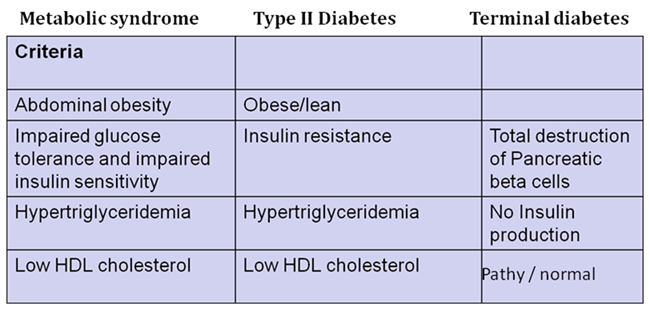Type II diabetes and metabolic disorders
While Type I diabetes is an autoimmune disease which results into pancreatic beta cell death and resultant lack of Insulin production, Type II diabetes is scientifically most challenging disease, which is characterized by elevated insulin resistance and glucose intolerance. Type II diabetes can occur as a result of dysfunction in glucose, lipid and energy homeostasis in any or all of the following organs/organ systems including liver, adipose, muscle, gastrointestinal (GI) tract. Elevated levels of serum glucose and free fatty acids occurring due to imbalances in lipid and carbohydrate metabolism then leads to endoplasmic reticular stress in pancreatic beta cells, leading ultimately to pancreatic beta cell death (terminal diabetes).

Diabetes Research at CDRI Focuses on Developing
➤ Therapeutics
➤ Knowledge-base on diabetes/dyslipidemia and metabolic syndrome through basic research.
Therapeutic Aims in Type II Diabetes
➤ Improving Insulin sensitivity/ glucose tolerance.
➤ Reduction in serum glucose.
➤ Improvement of circulating lipid profile.
Drug Design & Synthesis
➤Anti-diabetic/dyslipidemic molecules by target based drug designs and synthesis:
Targets:
GLP-1 analog
DPPIV inhibitor
➤ Natural product as a source of biologically active Anti-diabetic/dyslipidemic molecules (marine/terrestrial).
Screening & Drug Development
In vitro cell based screening.
➤Glucose-uptake assays in L6 Muscle cells
➤ 3T3L-1 based assays on adipocyte differentiation
➤ Hepatocyte based screenings on cholesterol and glucose metabolism
In vivo screening
Diabetes:
➤Streptozotocin-induced diabetic mice
➤ Sucrose loading model
➤db/db mice. Dyslipidemia: High fat fed Syrian hamsters.
Dyslipidemia:
➤ High fat fed Syrian hamsters
Basic Research

➤ Studies on functional regulation of carbohydrate and lipid metabolism by metabolic nuclear receptors.
➤ Proteomic analysis of 3T3L-1 cells treated with adipogenic compounds
➤ Studies on pancreatic ER stress.
Significant Acheivement
➤ CDR-134D123 (anti-hyperglycemic, Phase I): Natural product
➤ CDR134F194: IND filed
➤ Puffer fish oil: IND filed.
➤ 8 lead compounds identified with anti-hyperglycemic and/oranti-dyslipidemic activities
➤ Development and optimization of proteomic approaches for proteomic profiling of lead compound treated target tissues.
➤ Development and optimization of screening systems for metabolic nuclear receptors
➤ Development of pancreatic islet cell culture for ER stress studies